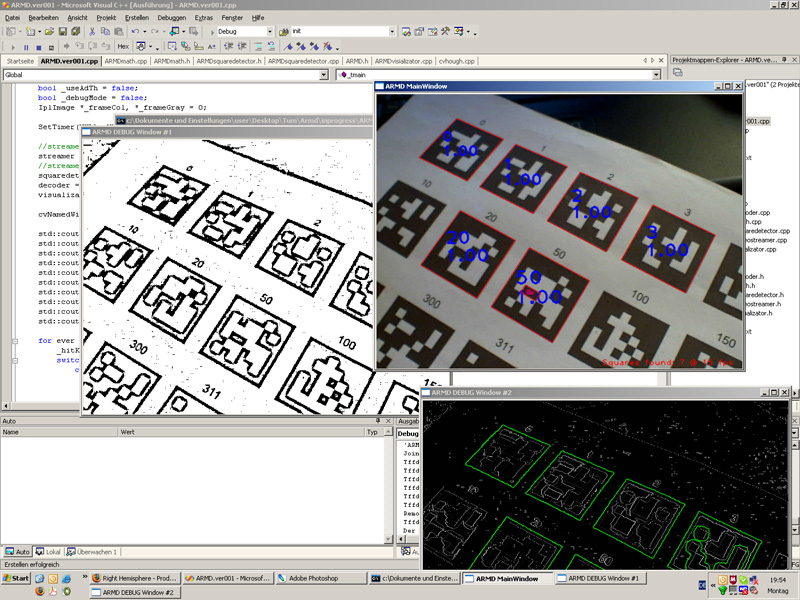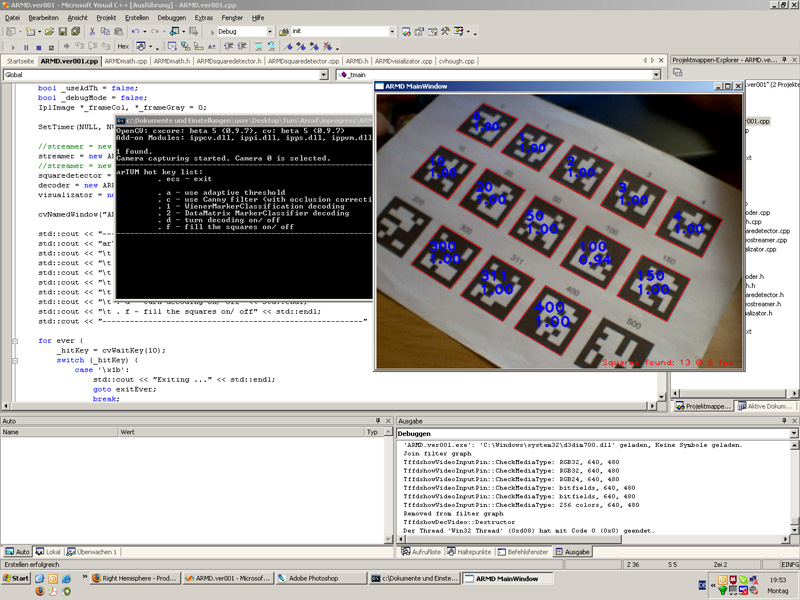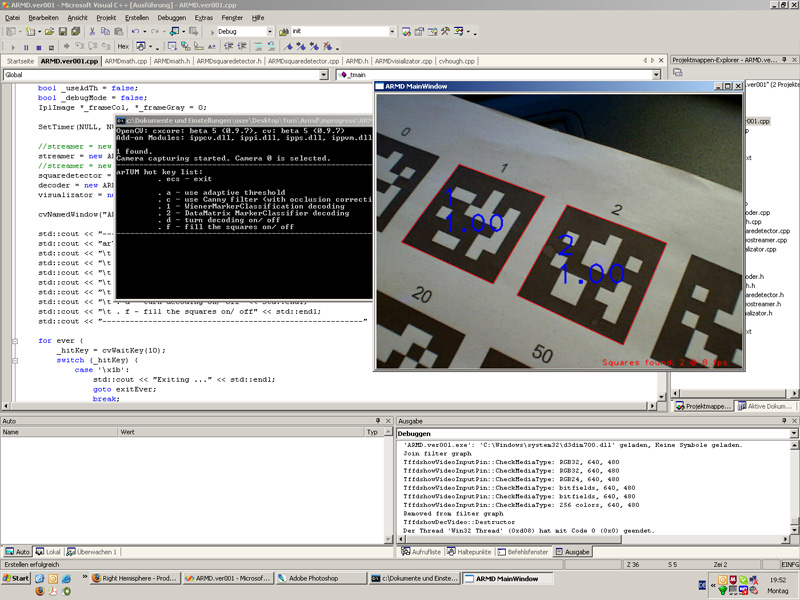Implementation of an AR application for robust marker detection
- Important issues of marker detection system
- False positive detection rate
- False negative detection rate
- Inter-marker confusion
- Stable to different lighting circumstances
- Dealing with occlusions
- Minimal marker size
- Vertex jitter
- Performance
- Marker design - the application works with bitonal sqare markers, which have two components:
- Kernel - 6x6 bitonal pattern, which is sampled into 36-bit digital code. The encoding/ decoding algorithms are provided by METAIO.
- Border – bi-tonal border, which is used for the proper 3D pose estimation of the marker. The border has two closed lines - outer-black- and inner-white-line. We have two variants of the border (Fig. 1a and Fig. 1b) and two algorithms for finding the inner and outer border points. Thereby we will provide eight edge points for 3D pose estimation. Now we are doing some test in different cases to choose one of the border variants. The detection algorithm must be fast, stable and works with as small as possible markers.
- Screenshots:
- Version 1 (Contour detectio with openCV and decoding with WienerMarkerClassification? library)
- Literature:
 |
 |
| Fig. 1a | Fig. 1b |



| ProjectForm | |
|---|---|
| Title: | Implementation of an AR application for robust marker detection |
| Abstract: | The main task of this SEP is an implementation of a fiducal marker system, which can detect digital markers, encode them and estimate their correct pose with respect to the camera. This system must have very small inter-marker confusion, false positive- and false negative detection probabilities. |
| Student: | Ivan Borisov |
| Director: | Nassir Navab |
| Supervisor: | Selim BenHimane |
| Type: | SEP |
| Area: | |
| Status: | finished |
| Start: | 01.06.2006 |
| Finish: | 15.12.2006 |
| Thesis (optional): | |
| Picture: | |